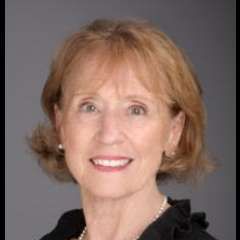Spring has sprung in London, and there was a definite taste of nature and things new abounding at the Coliseum in the first of two programmes by English National Ballet. In Beyond Ballets Russes 1 there is a ‘newly hatched’ bird, two very different ‘faunes’ and a freshly outfitted pagan ritual to the god of spring.
When the great Russian impresario Serge Diaghilev brought his Ballets Russes to Paris between 1909 and 1929, he brought not only sparkling classical heritage works but also new ideas, new choreography, new music. These innovative works were often controversial to say the least, but Diaghilev’s desire was to bring the era’s newest designers and musicians together with choreographers to create something new and startling. And this daring spirit is behind what forms the basis of the first programme in ENB’s tribute to Diaghilev.
Based on a Russian folk tale, The Firebird was and has remained one of the most iconic and spectacular of the classical ballets of that era. Several different versions have been created over the years, and for this season, ENB invited a young 21-year-old choreographer to take on the awesome task of producing a new one for the company. George Williamson, who hails from Worcestershire, has completely turned his back on the original scenario and created a ballet about today’s world – and its future. Dark, turbulent ‘Harry Potter’ clouds roll ominously across the back cloth as the mysterious opening music tells of pending doom. The light lifts, but only slightly (the whole ballet is done in gloom), to show his new-look Firebird, now a sleek avian encased in a bodysuit skin of glistening gold with a helmet of feathers, designed by David Bamber. She and the woman ‘Purity’ soon get tainted with the ways of the material world, along with exotic and complicated characters including The Peacock, Lead Celebrity, Army Captain and Three Muses (actually hoydens in red with hair extensions).
It’s all very different from the richness of the easy-to-follow Russian original, and at times it was best to sit and watch the dancing rather than try to work out what the choreographer had in mind. Williamson, in his first major commission, shows he can handle a full company of dancers well and is able to keep the interest and dance steps flowing, though there are at times a few too many high-leg arabesques. He has created some wonderful innovative moments such as when the Firebird escapes from the mayhem by diving through a tunnel of arms, and at the finale, when she is thrown, straight up, high into the air on one leg, and falls into a back-breaking pose, to be held aloft as the curtain falls.
Ksenia Ovsyanick was the Firebird, and demonstrated her suppleness, clean lines and great stamina – qualities that would be needed later when the company performed The Rite of Spring. And there was good dancing from the rest of the cast. Williamson has shown in this work that he is certainly a choreographer to keep tabs on.
When Vaslav Nijinsky created L’apres midi d’un faune, to the music of Claude Debussy, it was greeted with shock and scandal. The dancers were two-dimensional, dancing in bas-relief like the frieze around a piece of Grecian pottery. Added to this, there was the explicit erotic content – the desires of an animal for a pretty girl – which affronted the public’s sensitivities. On this ENB programme, both the original and a new working of the ballet were shown.
In the Nijinsky version, the role of the pipe-playing Faune was performed for the first time by Dmitri Gruzdyev who made a noble effort to change his normal, powerful dancing into the style of sideways walking, stepping with emphasis in sandals. Sadly for him – and the expectants in the audience – his final moment of sexual satisfaction was cut short by the curtain falling too fast.
A more contemporary view is David Dawson’s Faun(e), created for the company in 2009. Here, the stage is stripped bare, with just two pianos, and the piece becomes a paean to the beauty of the human form as it moves with elegance to the music. A man in a tattered skirt and bare chest moves with sweeping elegant lines, slow twisting, and sliding steps, creating images from the music – such a contrast to the original. He is later joined by a young boy dressed the same, and the older man begins to lead the young boy to manhood through dance. The visual effect is stunning as they mirror-image each other. However, the Coliseum has too large a stage for this piece – it was much more intimate when first seen at Sadler’s Wells. The dancers Jan Casier and Raphael Coumes-Marquet performed in unison and with great beauty and control.
The final ballet on the bill, The Rite of Spring, was a later version of yet another scandalous ballet which had seen its first-night audience throwing things at the stage, booing, and trying to stop the dancers’ tribal stompings to Stravinsky’s complicated score.
Kenneth MacMillan created his earthy version of the pagan rites of springtime half a century ago, although the dancers were clad in new costumes created by Kinder Aggugini. These were dark, athletic-looking (after all, this is Olympics year), with short curled wigs making them look like monkeys. This effect was emphasized as they jumped in unison – all 48 of them – with bent knees, arms held out to the side, fingers wide. The Rite is a relentless piece and the ENB dancers were magnificent in their unison when leaping and stomping, and for their stamina. As the Chosen One, the girl selected to be the sacrifice and dance herself to death, Erina Takahashi performed with great passion and intensity.


